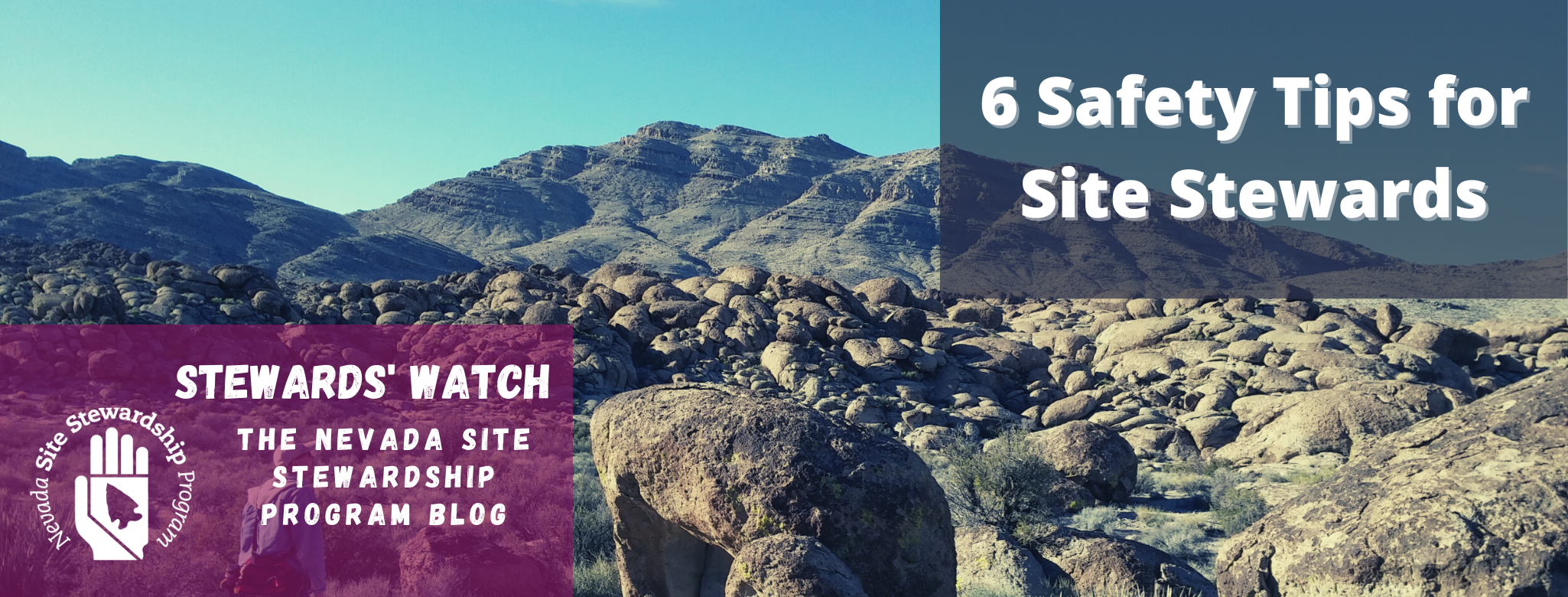6 Safety Tips for Site Stewards

1. Pay attention to cell service
Many of us feel safe if we can call for help in an emergency, but many stewarded sites are in areas without cell service. We recommend noting when your cell service drops off on your map, so you know how far you need to go to get to it. Sometimes it only requires climbing a hill.

2. Water, electrolytes, and “take it easy”
Stewards often lose focus, get tired, and speed through when visiting sites. This can be miserable and take away all the fun from visiting the site. There are a couple of ways to combat this: Bring lots of water (to any site visit) and electrolytes (salty foods, Gatorade, or hydration tablets). These two will prevent you from getting dehydrated and help you stay alert during your visit. Slowing down and making it a leisurely visit will also help. Often stewards hike to their site and then have a picnic before their return trip. This helps you refuel and give your body a rest.

3. Check your first aid kit regularly
First aid kits often get put into our hiking pack and are only removed when we have an injury. They can sometimes be in there for years without you thinking about them. Remember to check them a few times a year to make sure the medicine hasn’t expired, the wipes haven’t dried out, and the antiseptic hasn’t leaked. This is also a good time to restock band-aids, aspirin, Benadryl, bandages, and tape. If you are accident-prone, you probably want to check more often.

4. Hiking boots versus sneakers or sandals
There are several aspects of hiking boots that make them safer than sneakers or even hiking sandals when hiking in the desert. Hiking boots usually have soles made of a material like Vibrim which allows the bottom of the boot to stick to the rocks as you are stepping on them. This prevents you from slipping on different types of rock surfaces. (Note: Vibrim does not work well when walking on wet surfaces) Regular sneaker soles do not have the same kind of grip and could cause you to fall when scrambling over rocks.
Hiking sandals can have Vibrim soles, and they work just as well while scrambling over rocks. Their danger lays in the amount of exposed skin. The desert is full of cacti and other plants with thorns, sharp rocks, small but dangerous critters, and sunlight. The uncovered parts of your feet, when wearing sandals, will be prime places to get cuts, scratches, pricks, and sunburns. You may also find little rocks rolling between your feet and the soles that will make walking uncomfortable.

5. Investing in Technology
Even the most technology-averse steward should consider purchasing a GPS unit and an emergency locator beacon (link). The GPS unit can track where you go, point you in the direction of your vehicle, and help you retrace your steps to get back to it. The locator beacons are basically your emergency call button. When you press the button, it sends out a signal to the local emergency services indicating that you need help. They can then track your device to come directly to you.* Please note that you must be trained in how to use a GPS prior to going out.

6. Keeping Cool
Everyone has their own method to keep cool while hiking. Beyond the general advice of not hiking when it is hot outside, wearing synthetic breathable layers, and staying hydrated, there are a few other ways to be comfortable in the heat.
The following items may assist you:
- A bandana – To keep the sweat off your face and neck
- A frozen water bottle – Carry in the bottom of your pack and use a towel to tie it to the back of your neck.
- A cooling towel – Just add water and use it to keep your neck, head, or face cool.
- An umbrella – An alternative to wearing a hat and shade you can take anywhere.

A full list of "What to wear and bring while hiking" can be found here.
